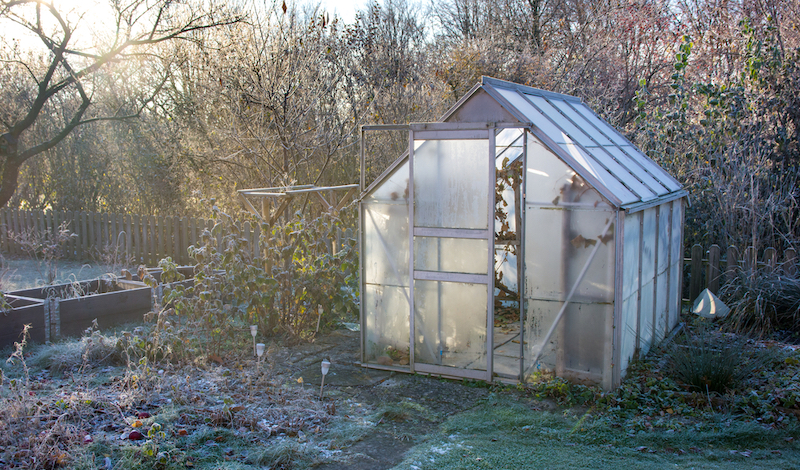Greenhouses can be your best friend over the cold winter months. Utilize the power of the sun in cold temperatures to keep your plants alive. Check out this article for tips and tricks on how to use greenhouses to your advantage.
Winter Plant Greenhouses
Q: We live in an apartment and are five stories up. We have a balcony with several potted shrubs in large pots. We don’t have room for them indoors. The weather started getting cold and windy, so we moved the pots against the wall. We built a plastic wall on the outside of the pots to stop the wind and help trap some of the apartment heat. It seemed like a good idea, but we checked on the plants, and they look horrible. There is mold growing on the leaves, and the branches look dried up. What did we do wrong? How do we protect plants in such an exposed location?
A: You had the right idea. Putting the pots against the wall will help moderate the temperature and block the wind a bit. I don’t know which plants you have, but it sounds like they still had their leaves on them when you built your little greenhouse.
The greenhouse is the problem. Like any greenhouse, it trapped the heat from sunlight and warmed the plants way too much. The plants then used up all the water in the pots, and that is what killed the branches. The leaves fell off, and decay organisms started composting the leaves.
If the plant varieties you have are capable of surviving planted in the ground in your area, then we only need to protect the root systems, as roots are much less tolerant of cold than branches. The top of the plants would be exposed to very cold air and survive with no extra help. The roots would be planted in and protected by the soil.
Next time, after they are against the wall, wrap the pots in insulating material, and then wrap them in plastic to keep the insulation dry. Lay insulation across the top of the pots, around the trunks and under the branches. This will keep the roots warmer and the tops exposed to the cold.
Oh, one more thing: Water the plants before wrapping them, and check to see whether the soil is still damp once a month through the winter.
If your plants should not be planted in the ground and only need to be protected from a short cold spell for a few days, then you need to provide the greenhouse with some ventilation. A window flap of sorts that you can open during the day and close at night will help prevent the overheating that you experienced with the first greenhouse.
If you think the greenhouse will get too cold at night, you can place plastic milk jugs of hot water in the greenhouse. They will lose their heat over night and warm up the plants.
Save or share this infographic for reference: Winter Plant Greenhouses

Email questions to Jeff Rugg at [email protected]. To find out more about Jeff Rugg and read features by other Creators Syndicate writers and cartoonists, visit the Creators Syndicate website at www.creators.com.
COPYRIGHT 2017 JEFF RUGG
DISTRIBUTED BY CREATORS.COM



